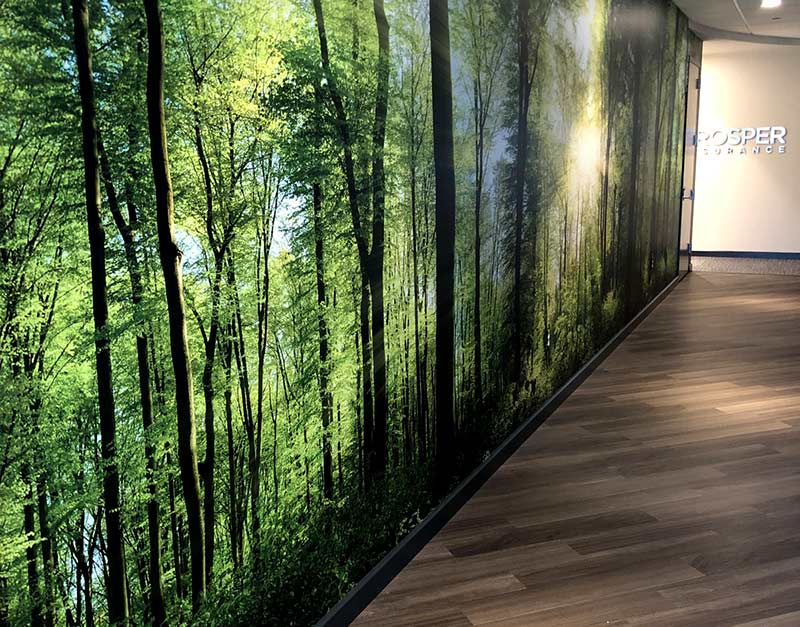There’s always risk of property damage. However, the wintertime brings a rather paradoxical type of risk. It’s cold on the outside and hot on the inside. This means your home is facing risk of fire and ice damages. You don’t want to be caught on the wrong end of winter’s elements. Water, ice and fire claims are very common during the cold months of winter.
Water or Ice Damage
Ice can be extremely damaging to a home in a few ways. The most common issues people experience are frozen or burst pipes and ice dams. Let’s discuss ways you can avoid these icy issues.
Frozen or Burst Pipes
This is the most common type of claim during the winter. In fact, according to the Insurance Information Institute, about 22% of all homeowners insurance claims are filed as a result of water or ice damage. If you don’t know what causes a frozen pipe, let us explain. When water inside pipes freezes, your plumbing may burst. This releases water into your property damaging carpets, floorboards, drywall, appliances and other belongings. It’s important to be especially vigilant once the outdoor temperature dips below 20 degrees Fahrenheit. This is prime time for incidents like this to occur.
Here’s how you can avoid these issues.
- Keep the inside warm. We recommend 65 degrees when you are home and 55 degrees when you are not.
- If power goes out, leave faucets open with a slight drip.
- If you’re leaving the home for an extended period of time, disconnect outdoor hoses and use an indoor valve to shut off water to the outside. Be sure to drain water from outside faucets before temps freeze.
- Insulate pipes with foam insulation, pipe sleeves or heat tape, especially in attics, basements, interior walls, crawl spaces, corners and other at-risk areas.
Ice Dams & Snow
A major hazard during the winter is the accumulation of snow and ice on your roof, which can lead to leaks, roof damage, and sometimes full or partial collapses of the roof. This accumulation is known as an ice dam. An ice dam forms when ice or snow melts on your roof and refreezes due to the gutters being blocked by debris or from the temperatures dropping quickly.
Here’s how you can avoid these issues:
- Keep your roof and gutters clear of leaves, debris, snow and ice.
- Install heat cables along the edge of your roof. These cables are designed to melt ice before it has a chance to form a dam.
- Use a roof rake to remove fresh snow buildup.
- Check and seal vents, chimneys and other possible gaps where ice dams may form.
- Don’t try to use a blower, pressure washer or blowtorch to remove ice dams. Seriously. Consult a licensed and insured vendor for removal.
Fire Damage
Fire plays a greater role in our homes during the colder months. Things like fireplaces, wood stoves and candles are used to create a festive glow. Unfortunately, these cozy opportunities account for many accidents. Then we add holiday decorations and space heaters into the mix. It’s really no wonder why the number of house fires soars during the winter months. The most common causes are listed below.
Candles
According to the National Fire Protection Association, candles cause 23 home fires each day. The top three days for home fires caused by candles are, unsurprisingly, Christmas Day, Christmas Eve and New Year’s Day. These scented home staple pieces are quite dangerous.
Cooking
Cooking is very popular during the holidays. Practicing safe cooking habits is the best form of prevention. Keep your cooking area clean of any grease or oil from previous meals and don’t leave your stove unattended. Smoke detectors are encouraged as well. And by “encouraged,” we mean necessary.
Decorations
Decorative lights are a big part of many family traditions. They’re basically the symbol of the holiday season. Often times, people use the same lights each year. Old and damaged lights can be a major hazard. It’s recommended that you check your lights for defects. Also, purchasing new LED lights, which use less energy and typically last longer and run cooler than incandescent lights is recommended for safer holiday displays.
And remember, don’t overload electrical outlets. Be sure to turn everything off when you aren’t home and when you go to bed.
Space Heaters
One of the biggest culprits in heating related fires is space heaters. Did you know, space heaters were responsible for nearly 44% of fires in the US between the years of 2012-2016? Those are some powerful little heaters.
When using a space heater, make sure it’s on a stable surface and away from anything flammable. Turn it off when you leave the room.



